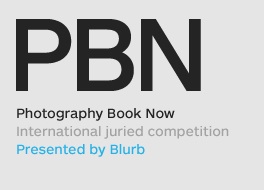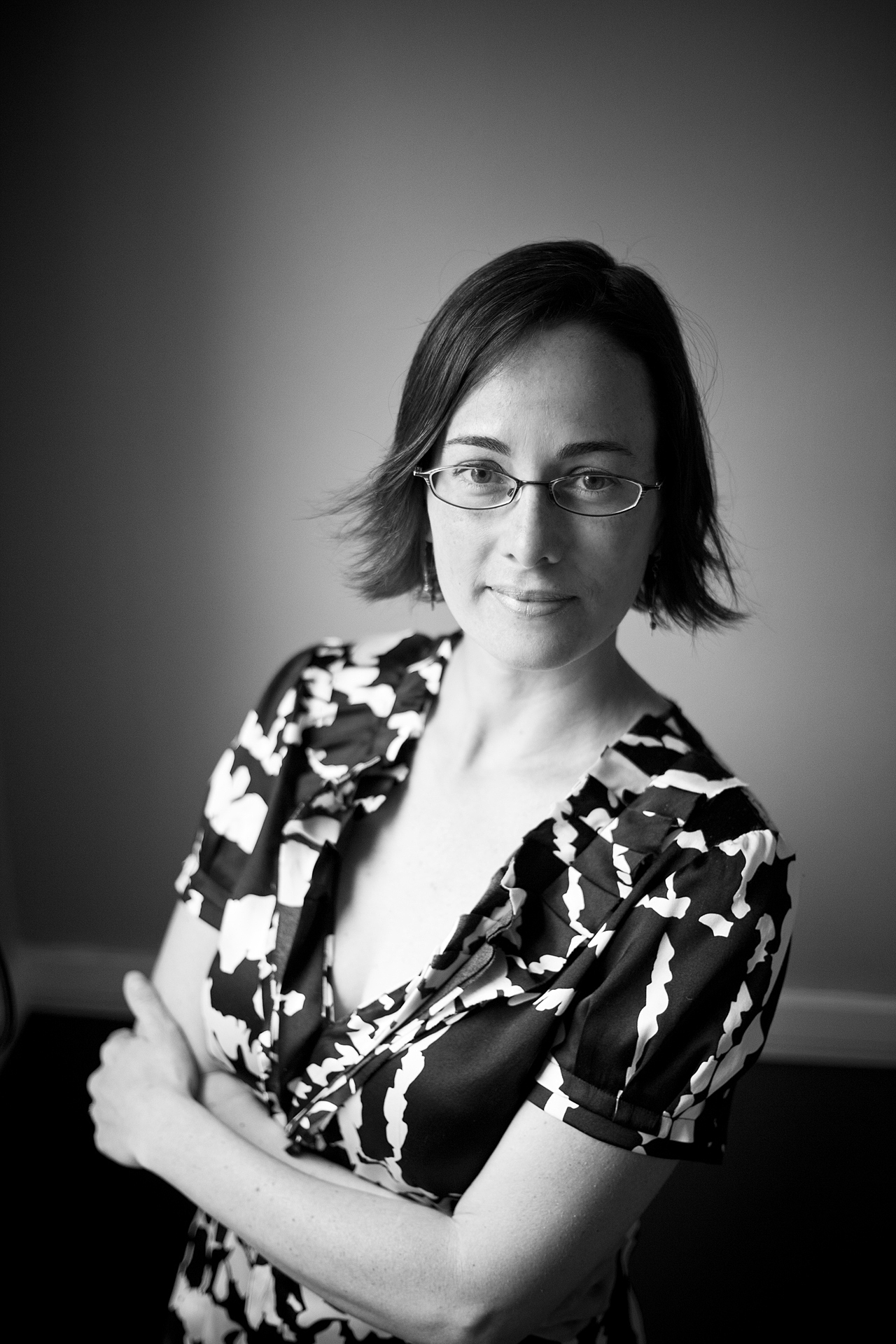
©Rebecca Drobis ALL RIGHTS RESERVED
The deadline for this year’s Blurb Photography Book Now is July 14, 2011 and I am looking forward to meeting in New York at the end of the summer with this year’s panel of judges to spend the day looking at books for the competition.
I’d like to thank Darius Himes and Blurb for inviting me to be a judge this year. And I would like to thank Rebecca Drobis, a Washington, D.C. photographer and recently chosen as one of PDN’s 30 2011, for my professional headshot.
The Photography Book Now competition celebrates self-publishing and awards a $25,000 cash prize for the winning book. Many people wrongly assume that the competition is limited to only Blurb books. The competition is open to ALL self-published books. I encourage you to submit your handmade books. Darius Himes discusses the competition here.
As one of the jurors Lori Reddy asked me a few questions for the Blurb blog. I’d like to post the whole interview here:
1. Please describe what makes a great successful photobook to you.
LL: Aesthetically speaking, a successful photobook is one in which all of the pieces make sense together. It should be more than just a book of photographs. And for me these books are objects in and of themselves and I see them as collectible works of art.
2. Do you have any advice for photographers working on book projects?
LL: Make it a creative expression of the photographic project and yourself. Be realistic about the print run for your book. Think about the life of the book once it is created. Make sure a copy exists in at least one public collection.
3. What is a favorite photobook that you own or have seen from the last few years?
LL: That is a difficult question. I have trouble narrowing down my favorites every year to under twenty. Two books that immediately come to mind though are – for creativity and use of materials:
Kitintale by Yann Gross which I nominated for the
4th International Photobook Award 2011 – and for content and form:
Fifty-One Years by David Goldblatt (Actar). The Goldblatt photobook is a small reference book that provides an indepth overview of Goldblatt’s work and includes his early “On the Mines” series.
4. What is the most exciting aspect of the photography scene right now?
LL: Obviously I am excited about the self-published and indie published photobook scene right now. Whether you use Blurb or not to make your photobook, they have revolutionized our way of thinking in regards to traditional book publishing, and I look forward to seeing this germinate in photo communities that have yet to really explore the platform of the photobook.
5. You have a wonderful blog post listing your favorite self-published photography books for 2010. We know it’s still early but do you have any that you think will make your list for 2011?
LL: Thank you. It is still early for me yet and at the moment my thoughts are on my list of photobooks for the Indie Photobook Library’s first feature-length exhibition at the Photographic Resource Center in Boston which opens in September. I will mention, however, the book
Svalbard by Greg White and
Firework Studies by Pierre Le Hors (Hassla) – two books from 2010 but ones that I just saw this year.
6. What do the most compelling/most memorable photography books have in common?
LL: The most memorable books are the ones in which I forget about myself for a moment, lose track of my surroundings, and enter into the reality in the photographs. And from that response, it may seem that the book form is of no importance, but it is. The form and materials should aid in experiencing the work.
7. What photography blogs do you like/follow?
LL: I get all my news through facebook and twitter and follow hundreds of different people and organizations that way.
8. Is there anything we didn’t ask you that you think would be helpful or informative to anyone entered in or thinking of entering Photography Book Now 2011?
LL: If you are making a Blurb book, don’t forget about the spine.
Good luck to everyone entering PBN 2011!
An interview with Elizabeth Fleming about using MagCloud and Blurb to publish her own magazine and book.

magazine:
Life is a Series of Small Moments
by Elizabeth Fleming
MagCloud, 2009
8.25″ × 10.75″
32 pages
$12.00
book:
Life is a Series of Small Moments
by Elizabeth Fleming
Blurb, 2009
13″ x 11″
50 pages
$84.95
Inspired by Harlan Erskine’s and Todd Walker’s first Tweetchat about the Future of Photobooks in conjunction with the ongoing discussion prompted by Miki Johnson of Resolve, the livebooks blog, and Andy Adams of Flak Photo, I wanted to continue the conversation with Elizabeth Fleming, a photographer who has published with both MagCloud and Blurb. (Highlights from the Tweetchat can be seen here.)
Part of the TweetChat, as summarized by Miki Johnson, focused on
“How often are photobooks purchased from print-on-demand storefronts like Blurb? Are they mostly photographers printing their own portfolios? People agreed they are more likely to buy books when they can touch them. If they’re buying them online, they need to be more of a “known quantity,” either a photographer or publisher they know, like, and trust to put out a quality product.”
I fully agree with Miki and the “people” about being hesitant to buy an expensive print-on-demand book without having seen it in person first. Aside from the Blurb Photography.Book.Now Meet-Ups and FotoWeek DC, there is nowhere to hold and flip through these books.
I asked Elizabeth about her experiences publishing with MagCloud and Blurb, her audience for both formats, and if there is a limited edition artist book in her photobook future.
LL: Which came first – the MagCloud magazine or the Blurb book?
Elizabeth Fleming: I made the magazine about a year before I made the book.
LL: What was your motivation behind each of these forms?
EF: With the magazine it was primarily a desire to see physically how my images would relate to each other in print format. It felt like a freeing way to experiment: because it was a magazine, and cost nothing to produce, I was able to play around without the pressure of trying to make it “perfect.” (With Blurb you have to buy a copy of your book in order for it to be listed for sale on their website.) As a result I found that creating the magazine was a very fulfilling process.
The book was the next step; I had kept the magazine under a certain amount of pages because I thought allowing it to become too “thick” would detract from the sense of the medium, in that it’s not as precious (even if my perfectionistic tendencies came into play in its making). With the book I was able to hone what I’d done with the magazine–I made it longer, a bit slower in the pacing, and included a dedication and statement. The size is bigger, and the format (vertical for the magazine, horizontal for the book) made it feel more polished to me as well. Obviously the hardbound cover turns the book into a more hefty object, which gives it a certain “mental” weight too, in my opinion.

spread from the magazine ©Elizabeth Fleming

spread from the book ©Elizabeth Fleming
LL: Do you have the same audience for both?
EF: I think the magazine is more accessible in general. It certainly is much cheaper to purchase. I believe people might be more inclined to browse Magcloud and potentially come across my publication by accident, as opposed to Blurb, which seems to attract a fine art-oriented base. The price of the Blurb book makes it more of a collector’s item in a sense; the magazine, at $12, is something anyone can purchase, which seems more democratic.
LL: Do you use them for marketing your work?
EF: I do. When I attend portfolio reviews I always bring a stack of magazines and offer one of them as a leave-behind, and I bring the book as well–particularly if I have a review with a publisher–to show as a mock-up. There are also links on the sidebar of my blog to direct people to the sales sites in the hopes of generating interest and potential income. And if I’ve met someone in the industry in a more informal setting I’ll often send a magazine along as a way to keep in touch and place a physical reminder of my images in someone’s hands.
LL: Is one selling faster than the other?
EF: The magazine by far, it’s not even a contest. I’ve had many conversations with fellow photographers who have also used Blurb, and the general consensus seems to be that we’ve all employed the service as a means for creating a template. In essence, when we show the book around it’s with a bit of a disclaimer: this is what my book would look like if an actual publishing house were to produce a more high-end version. Blurb is good for what it is, but the quality isn’t impeccable, I have to admit–plus the prices for purchase are extremely high. My book is over $80 and I think it’s a deterrent–if someone can buy an art book for that much from Steidl or Schilt Publishing, I don’t think they’re going to spend that kind of money on a self-published piece. Again, at $12 for the magazine, there’s no “risk”–it’s a nice way for someone to have a look at my photographs in print, but because it’s affordable I think there’s an understanding that the color isn’t going to be 100% perfect, and that the paper quality is going to be like any typical magazine for sale out there.

spread from the magazine ©Elizabeth Fleming

spread from the book ©Elizabeth Fleming
LL: I read about the final moments of finishing and perfecting your Blurb book on your blog. Can you talk about the pros and cons of each process?
EF: For some reason, despite the fact that both Magcloud and Blurb have you upload PDFs and I used the same program (Adobe InDesign) for each, I had a much more difficult time with the template for Blurb. When my PDF was uploaded I ran into a number of technical difficulties with image distortion on the cover. Admittedly, I was down to the wire because I was trying to meet the submission deadline for the Photography.Book.Now competition and therefore didn’t have much time to contact customer service, so the problems I had may have been able to be resolved more easily if I had had some wiggle room. Instead I ended up changing my cover in order to get around the glitches. Regardless, I also felt Blurb’s templates weren’t entirely accurate, whereas Magcloud’s matched up well.
Otherwise, it’s not so much a pro/con situation as a different way of working. As I mentioned before, making the magazine felt freeing and enjoyable. With the book I was more emotional–I spent much more time with every aspect of its creation, and so putting it out into the world was a bigger deal for my psyche than with the magazine.
LL: Have you considered making a limited edition artist book?
EF: Yes, quite seriously. I think there’s a lot of room for new types of creativity to emerge through limited edition books. They have the potential to become artworks in and of themselves, with many options for being hand-bound, multilayered, or handwritten in sections, in addition to the images. One could even have a single edition for a unique one-of-a-kind piece, or a small run with some sort of maker’s mark. I think a more overt sense of the photographer’s hand is where the significance of the artist book lies, and will be what sets limited editions apart from the formalized self publishing industry.
LL: Thank you Elizabeth.
To purchase the magazine from MagCloud click here.
Elizabeth’s Blurb book was selected as an Honorable Mention in the 2009 Photography.Book.Now competition. To purchase the book from the Blurb bookstore click here.
Both can be purchased from Elizabeth’s blog.

spread from the magazine ©Elizabeth Fleming
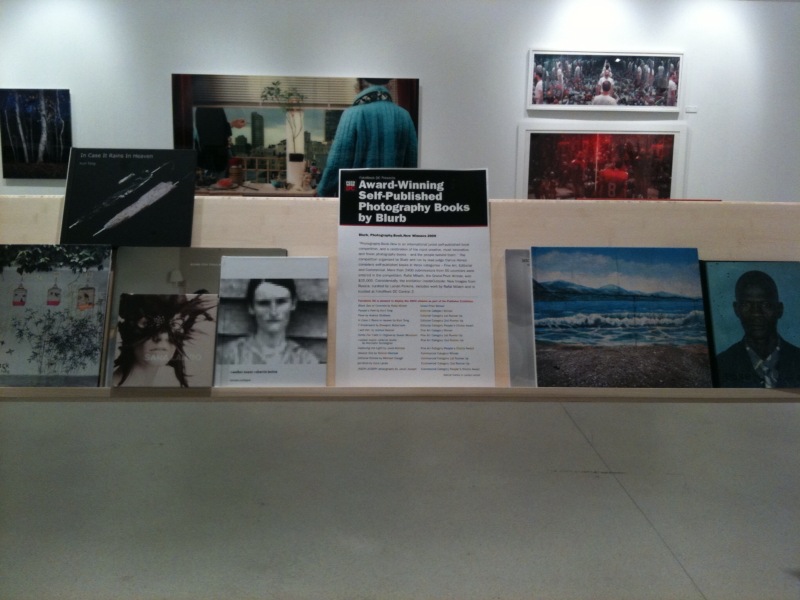
I love photography books and this year for FotoWeek DC I was part of the Photobook/Publisher Exhibition Committee. Over 250 books are being displayed this week at FotoWeek DC on M Street in Georgetown from over 50 publishers. A unique inclusion this year, spearheaded by myself, are the Photography.Book.Now 2009 Winners. What amazing work! Congratulations to all the winners.
“Photography.Book.Now is an international juried self-published book competition, and a celebration of the most creative, most innovative, and finest photography books – and the people behind them.” The competition organized by Blurb and run by lead judge Darius Himes considers self-published books in three categories – Fine Art, Editorial and Commercial. More than 2400 submissions from 50 countries were entered in the competition. Rafal Milach, the Grand Prize Winner, won $25,000. Coincidentally, the FotoWeek DC exhibition InsideOutside: New Images from Russia, curated by Lucian Perkins, includes work by Rafal Milach.
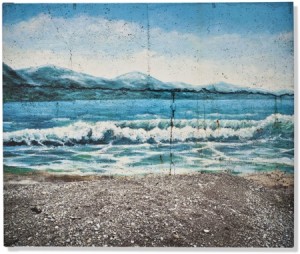
Rafal Milach
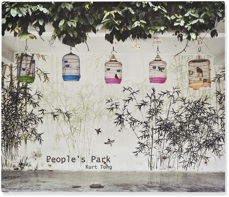
Kurt Tong
- Black Sea of Concrete by Rafal Milach – Grand Prize Winner
- People’s Park by Kurt Tong – Editorial Category Winner
- Pose by Andrea Stultiens – Editorial Category 1st Runner Up
- In Case It Rains in Heaven by Kurt Tong – Editorial Category 2nd Runner Up
- F Ampersand by Duwayno Robertson – Editorial Category People’s Choice Award
- i sell fish. by Joshua Deaner – Fine Art Category Winner
- Some Fox Trails in Virginia by Susan Worsham – Fine Art Category 1st Runner Up
- +walker evans +sherrie levine by Hermann Zschiegner – Fine Art Category 2nd Runner Up
- Capturing the Light by Lewis Kemper – Fine Art Category People’s Choice Award
- Volume One by Dennis Kleiman – Commercial Category Winner
- Editorial Stories by Michael Creagh – Commerical Category 1st Runner Up
- portfolio by Sara Lando – Commercial Category 2nd Runner Up
- JASON JOSEPH photography by Jason Joseph – Commercial Category People’s Choice Award

